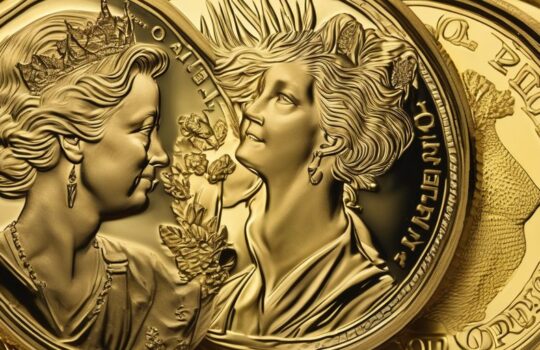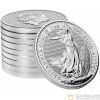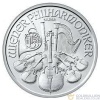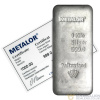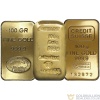Current Market Analysis: 1 oz Gold Bar Price Trends
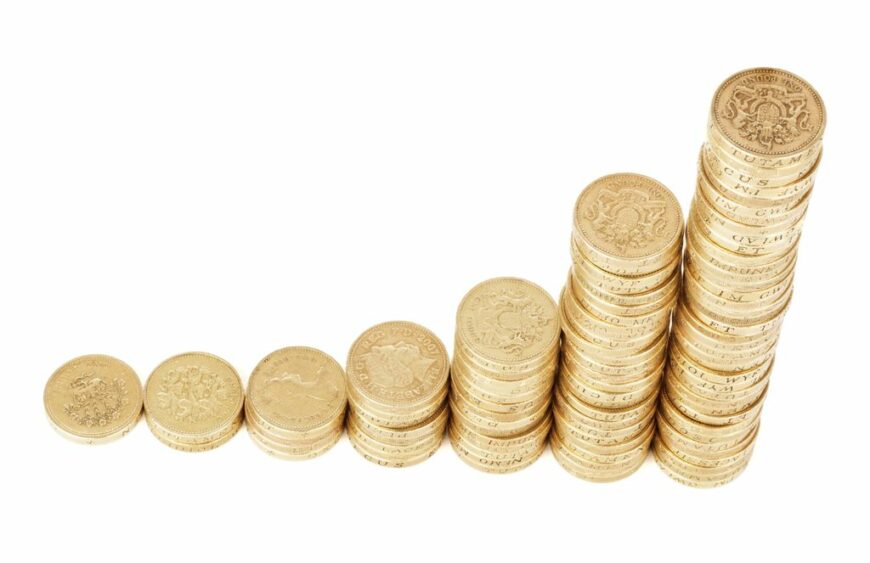
Gold has been a symbol of wealth and prosperity for centuries, and its price trends have always been of interest to investors and enthusiasts alike. In this article, we will delve into the historical price trends of gold, understand the concept of spot price, and explore the factors influencing gold bar and coin investments. By the end of this analysis, you will have a comprehensive understanding of the current market dynamics of 1 oz gold bar price trends.
Key Takeaways
- Historical gold price trends provide valuable insights, but hindsight bias should be considered when analysing long-term data.
- The gold spot price is the benchmark for wholesale gold trading and is influenced by various market forces.
- Investing in gold bars and coins involves understanding premiums, factors affecting premiums, and determining the right price to buy or sell.
- Geopolitical instability, economic forecasts, and market trends play a significant role in shaping future gold price forecasts.
- The demand, limited supply, and size of gold bullion influence the premiums and the right price to buy or sell gold.
Historical Gold Price Trends

Long-term Price Analysis
When delving into the historical performance of gold, it becomes evident that the precious metal has experienced significant fluctuations over the decades. Investors often scrutinise these long-term trends to discern patterns that could hint at future price movements. For instance, the gold market has witnessed peaks and troughs that correlate with global economic and geopolitical events, offering insights into its reactive nature.
The analysis of historical gold prices is crucial, as it provides a window into the metal’s past reactions to various stimuli, which, while not a guaranteed predictor, can inform future investment strategies.
A notable observation is the all-time high price of gold in 1980, which was subsequently surpassed in recent years, with a record price of $2,135 per ounce in December 2023. However, when considering inflation, these figures present a different story. The following table summarises key historical price points:
| Year | Price (USD) |
|---|---|
| 1974 | 183.77 |
| 1980 | 594.90 |
| 2000 | 279.11 |
| 2011 | 1,571.52 |
| 2023 | 2,135.00 |
It is important to approach historical data with caution, as hindsight bias can lead to an overestimation of the predictability of market trends. The past performance of gold, while informative, is not a definitive guide to future results.
Factors Affecting Price Swings
The volatility of gold prices is influenced by a myriad of factors, often interlinked with global economic and political landscapes. Political events and economic policies play a significant role in the fluctuations of gold prices. For instance, tensions between major economies such as the US and China can lead to abrupt changes in the market. Sanctions, trade wars, and political instability are key elements that can alter the XAU rate significantly.
It is crucial to consider the impact of the main gold-producing countries. China, Australia, Russia, and Canada collectively contribute to a substantial portion of the global gold supply, and shifts in their output can sway prices.
Interest rates are another critical factor. Gold, which yields no income, is inversely related to interest-bearing assets like bonds. When interest rates rise, gold prices often decrease as investors seek returns from income-generating investments. Conversely, lower interest rates can make gold more attractive. Here is a summary of the key macroeconomic indicators to watch:
- Federal funds rate changes
- Inflationary expectations
- Currency movements
- Money supply size
- Balance of imports and exports
Understanding these factors and their potential impact on gold prices is essential for investors looking to navigate the precious metals market effectively.
Gold Price Forecast
As we look towards the future, the gold price forecast remains a topic of considerable interest for investors and analysts alike. Moderate growth is anticipated throughout 2024, with predictions suggesting that the precious metal could trade above $2,000.
The consensus among experts points to a bullish trend, with potential highs reaching around $2,500 by April 2024, followed by a period of correction.
Several factors, including central bank policies, economic recoveries, and market sentiment, will play a crucial role in shaping these outcomes. Here’s a brief summary of the forecasts:
| Year | Forecasted Price (USD) |
|---|---|
| 2023 | $1,923 – $1,958.51 |
| 2024 | $2,000 – $2,500 |
| 2025 | Up to $2,500 |
| 2026 | Up to $3,000 |
It is essential to approach these forecasts with caution, as the market is subject to rapid changes and unforeseen events. Nevertheless, the general sentiment suggests a positive trajectory for gold prices in the coming years.
Understanding Gold Spot Price

Gold Spot Price Definition
The gold spot price is a dynamic figure, representing the current market value at which a troy ounce of gold can be bought or sold. It is the price that is quoted in the financial media and is the basis for pricing gold products. The spot price fluctuates constantly due to market forces such as supply and demand, geopolitical events, and economic data.
The spot price is typically quoted in two components: the bid and the ask. The bid price is what buyers are willing to pay for gold, while the ask price is what sellers are asking for it. The difference between these two prices is known as the ‘spread’, which serves as the profit margin for bullion banks.
The gold spot price is crucial for investors as it provides a real-time benchmark for the value of their holdings.
Understanding the gold spot price is essential for anyone involved in the gold market, whether they are investors, collectors, or those looking to hedge against economic uncertainty.
Live Gold Price
The live gold price, also known as the spot gold price, is a dynamic figure that represents the current market value of gold. It is the price at which gold can be bought or sold at a given moment and is typically quoted for a troy ounce of this precious metal. The live gold price fluctuates throughout the trading day, influenced by a myriad of factors including market demand, geopolitical events, and economic indicators.
The live gold price is a crucial reference for investors and traders, providing a real-time snapshot of gold’s market value.
For instance, as of 8:17 am ET on January 26, 2024, the live gold price was $2,023 per ounce, marking a slight increase from the previous day’s closing price. Here’s a brief overview of recent price movements:
| Date & Time (ET) | Gold Price (per ounce) |
|---|---|
| Jan 26, 2024, 8:17 am | $2,023 |
| Previous Day | $2,021 |
| Last Week | $2,010 |
| One Month Ago | $2,055 |
These figures underscore the importance of staying informed about the latest market conditions, especially if you are considering buying or selling gold. The live gold price serves as a benchmark for pricing various gold products, including 1 oz gold bars and coins.
Factors Influencing Spot Price
The spot price of gold is a dynamic figure, shaped by a myriad of factors that can sway its value on a daily basis. Market sentiment plays a crucial role, often driven by geopolitical events, economic data releases, and central bank decisions. For instance, heightened geopolitical tensions or economic uncertainty can lead to an increase in gold prices as investors seek safe-haven assets.
- Macroeconomic indicators such as federal funds rate changes, inflationary expectations, and currency movements significantly impact the spot price.
- Supply and demand dynamics are also pivotal, with major gold-consuming countries like India and China influencing global demand.
- The cost of mining and production, along with the balance of imports and exports, further contributes to price fluctuations.
It is essential to consider the state of the main gold-importing countries, as their demand can dictate the market’s direction.
Interest rates are another influential factor; as gold does not yield income, it becomes less attractive when interest rates rise, leading to potential price declines. Conversely, lower interest rates can make gold a more appealing investment. It’s important to note that these factors are interrelated and can compound to create significant price movements.
Investing in Gold Bars and Coins

Gold Bar Premiums
When purchasing 1 oz gold bars, investors must consider the premium they are paying over the spot price of gold. The premium reflects the costs associated with producing, transporting, and selling the gold bars. It includes expenses for refining, minting, fabrication, insurance, and storage, as well as the dealer’s profit margin. The premium is influenced by factors such as demand, supply constraints, and the costs of raw materials and production.
Premiums on gold bars are not static; they fluctuate based on market conditions and the scale of the bar. Smaller bars tend to have higher premiums due to the greater cost per unit for production.
For example, the premium for a 1 oz gold bar may vary as follows:
| Quantity | Premium per Bar |
|---|---|
| 1-9 | $30 |
| 10-19 | $28 |
| 20+ | $25 |
It’s important for investors to monitor these premiums to determine the most cost-effective time to buy or sell. While there is no ‘right’ price, being aware of the premium’s components can help in making informed investment decisions.
Right Price to Buy or Sell Gold
Determining the right price to buy or sell gold can be a complex task, as there is no single ideal price point. The value of gold is influenced by a myriad of factors, including market sentiment, economic stability, and the balance of supply and demand. Investors should focus on gold’s fundamental attributes, such as its scarcity and the finite nature of its production.
When considering the purchase or sale of gold, it is crucial to take into account the premiums associated with gold bars and coins. These premiums cover various costs such as refining, minting, and distribution, and can vary depending on the size and weight of the gold product. For instance:
| Gold Product | Typical Premium |
|---|---|
| 1 oz Gold Bar | 3% – 5% |
| 1 oz Gold Coin | 5% – 10% |
Remember, gold is not just a commodity; it is a form of financial insurance against economic uncertainty. Its value lies in its ability to preserve wealth over time, rather than short-term price fluctuations.
Ultimately, the decision to buy or sell should be based on individual financial goals, current market conditions, and long-term investment strategies. It’s advisable to stay informed about the latest market trends and to consult with a financial advisor if necessary.
Factors Affecting Gold Coin Premiums
When considering the purchase of gold coins, investors must be aware of the premiums attached to them. These premiums are influenced by a variety of factors, including the coin’s rarity, demand, and the costs associated with production and distribution. The condition of the coin also plays a crucial role, as mint-condition pieces are often more sought after than those with signs of wear.
Authenticity is another key aspect that can affect premiums. Ensuring the purchase of genuine gold coins requires vigilance and often a willingness to pay a higher premium for coins with verified purity and origin. Below is a list of factors to consider when evaluating gold coin premiums:
- Rarity and collectability
- Market demand
- Production and distribution costs
- Coin condition
- Historical significance
It is essential to conduct thorough research and seek professional advice before making any investment decisions. The market for gold coins is complex, and understanding the nuances can help in making informed choices.
Conclusion
In conclusion, the analysis of long-term data reveals the historical price trends of one ounce of gold since 1974. It is important to note that hindsight bias can lead to overestimation of predictability and underestimation of risks. The recent record high of $2,135 per ounce in December 2023 reflects the volatility and potential for significant price fluctuations. As investors navigate the gold market, it is crucial to consider both historical data and current market dynamics to make informed decisions.
Frequently Asked Questions
What is the significance of historical gold price trends?
Historical gold price trends provide valuable insights into the past performance of gold, but it’s important to remember that hindsight bias can lead to overestimation of predictability and overlooking of uncertainties and risks.
What is the gold spot price and how is it determined?
The gold spot price is the wholesale interbank price for a 400-ounce gold bar for delivery in two business days. It is influenced by market forces and is not static, changing on a per-minute basis.
How are gold bar premiums calculated and what factors influence them?
Gold bar premiums are calculated based on the cost of refining, minting, fabrication, transportation, storage, insurance, marketing costs, and dealer profit. Demand and supply dynamics also influence the premium.
What factors should be considered when investing in gold bars and coins?
When investing in gold bars and coins, factors such as geopolitical instability, economic forecasts, and market trends should be considered, along with the right price to buy or sell gold and the influence of gold coin premiums.
What is the live gold price and where can it be viewed?
The live gold price, also known as the spot gold price, is the benchmark for the gold price and can be viewed on financial media platforms. It is the wholesale interbank price for a 400-ounce gold bar for delivery in two business days.
What are the key considerations for gold price forecasts and how reliable are they?
Key considerations for gold price forecasts include geopolitical events, economic indicators, and market sentiment. While forecasts provide insights, they are subject to uncertainties and market dynamics.


